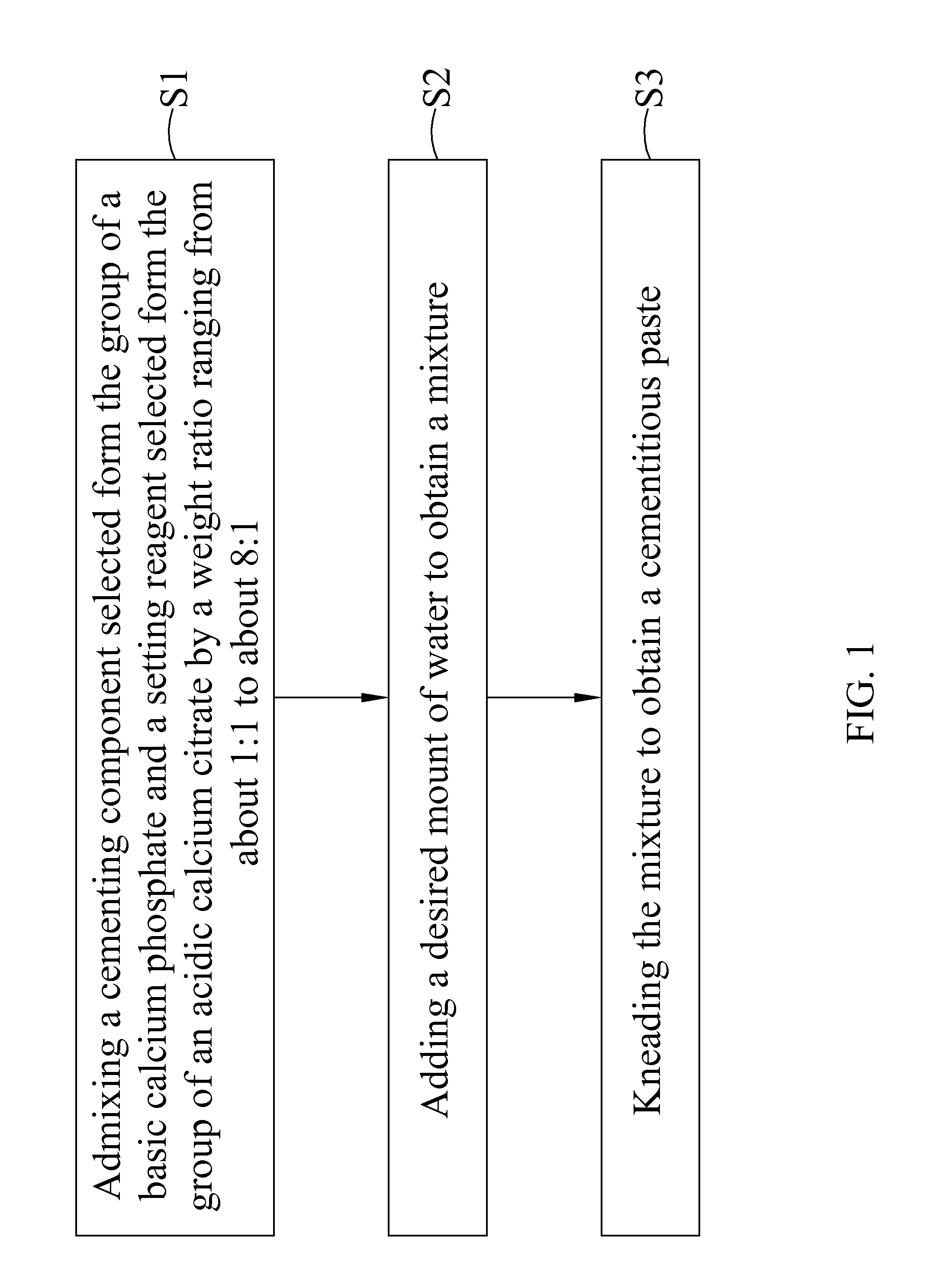Surgical Calcium Phosphate Citrate-Containing Cement and Method of Manufacturing the Same
a calcium phosphate citrate and cement technology, applied in the field of surgical cement, can solve the problems of affecting the application of precipitated ha in the medical field, difficult shape, brittle block form, etc., and achieves good flow character, good setting behavior, and good resorption rate.
- Summary
- Abstract
- Description
- Claims
- Application Information
AI Technical Summary
Benefits of technology
Problems solved by technology
Method used
Image
Examples
example 1
[0040]2 g decomposed HA was mixed with 1.2 g Ca(H2 Citrate)2, and 0.35 g CaH Citrate. The mixed powder was then further mixed with 1.2 ml of pure water to form a paste. The paste flowed well within 2-6 minutes. A small amount of the paste was added into water at 5 minutes after preparation. This small piece of paste stayed very well in water and did not deform or disintegrate, and set well in water. The paste set at 8 minutes and became hard. After that, the hardened cement was aged in water. The setting cement was still very hard and did not show any sign of disintegration after aging in water for several months.
examples 2-6
[0041]Experiments 2 to 6 were designed to study the effect of acidic monocalcium citrate on the setting time of the cement. In each of these experiments, 1 g of decomposed HA was used. The amounts of Ca(H2 Citrate)2 and water used were varied. The results are shown in Table 1.
TABLE 1Showing the setting timeAmount ofSetting timeExperi. No.Ca(H2Citrate)2 (g)Amount of H2O (g)(min)20.40.57-830.50.57-840.60.57-850.80.68-961.00.711
[0042]The setting time varies with the amount of acidic monocalcium citrate used. When the amount of Ca(H2 Citrate)2 used varies from 0.4 g to 0.6 g, the setting time stays the same. When the amount changes from 0.6 g to 1.0 g, the changes of setting time are rather mild.
example 7
[0043]2 g of α-TCP as mixed with 0.5 g Ca(H2 Citrate)2 first. The mixed powder was then further mixed with 0.8 ml of water. The paste flow well at beginning few minutes. The paste set at around 6 minutes. The setting cement stays very strong in water for several months.
PUM
| Property | Measurement | Unit |
|---|---|---|
| particle size | aaaaa | aaaaa |
| mole ratio | aaaaa | aaaaa |
| mole ratio | aaaaa | aaaaa |
Abstract
Description
Claims
Application Information
 Login to View More
Login to View More - R&D
- Intellectual Property
- Life Sciences
- Materials
- Tech Scout
- Unparalleled Data Quality
- Higher Quality Content
- 60% Fewer Hallucinations
Browse by: Latest US Patents, China's latest patents, Technical Efficacy Thesaurus, Application Domain, Technology Topic, Popular Technical Reports.
© 2025 PatSnap. All rights reserved.Legal|Privacy policy|Modern Slavery Act Transparency Statement|Sitemap|About US| Contact US: help@patsnap.com


